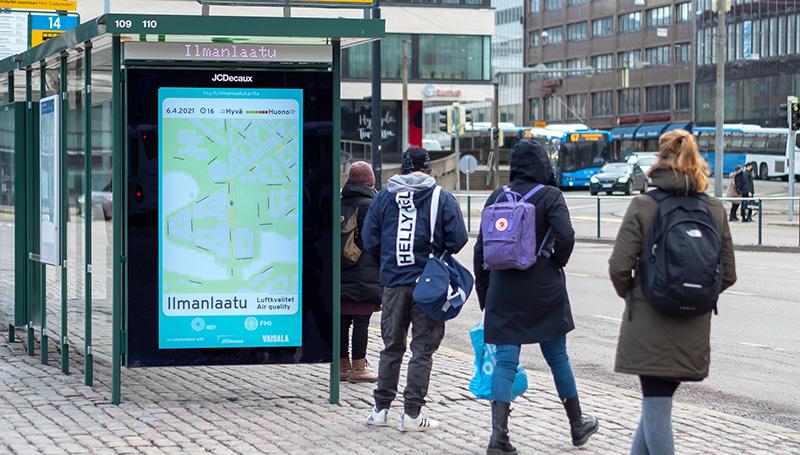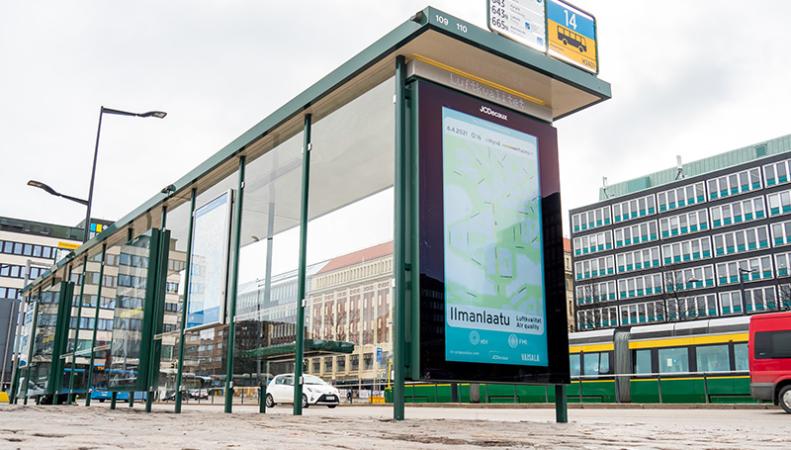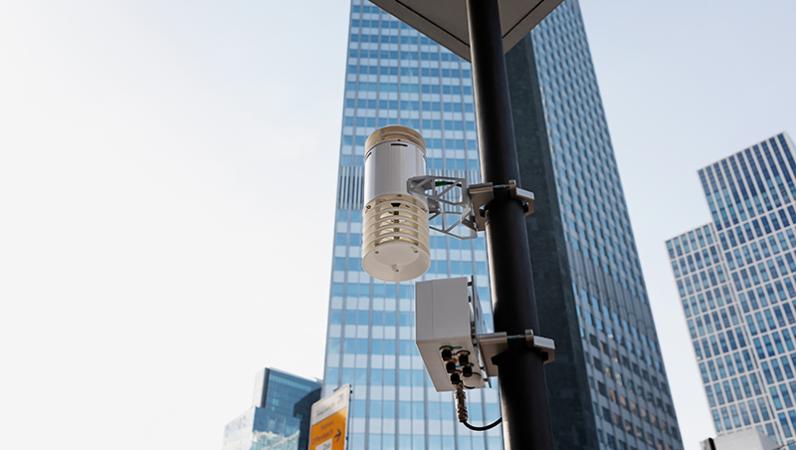Innovations in sharing air quality information to improve well-being
Environmental awareness and action for a better tomorrow are the hottest topics on the table today. Air pollution is a major challenge around the globe, causing an estimated 7 million premature deaths per year.
Getting a detailed picture of air quality is only one side of the coin: The other is taking action. By putting the information in the hands of communities, people become more aware and can take steps to reduce their exposure – in this case, with digital displays on two public transportation stops.
The hyperlocal air quality information pilot
In the search of new ways to boost awareness of current air quality conditions, Vaisala teamed up with JC Decaux to pilot a project using a tram stop and a bus stop in the center of Helsinki in 2021. People usually have a couple of minutes when waiting for transportation, so it’s a good opportunity to offer them relevant and useful information.
JC Decaux has developed a sophisticated outdoor advertising system that was ideal for the pilot which included one display at each stop.
One display included hyperlocal air information around the tram and bus stop with a map of the location among rotating ads on the screen. The other was a color-coded and labeled bar which showed the air quality index. The map was visible in April and May 2021, and the air quality bars are still in place today. Both locations are on busy streets, and the tram and bus stops are also usually very busy.

An impressive response
After the summer, we conducted a two-part survey consisting of face-to-face interviews and a quantitative online questionnaire to poll the public’s reactions and perceptions of the air quality map and bar. There were 37 interviews and 282 online survey participants.
Despite the pandemic strongly affecting the use of public transport, the results of the pilot are promising. Based on the interviews, 19% of respondents remembered seeing the air quality map and 13% remembered seeing the air quality bar. The online survey results were similar: 16% had seen one or both of the displays.
The most encouraging result is that 73% think it is important to get reliable information on the situational air quality in a city, and almost a third of the online survey respondents stated they check air quality information at least once a week. Also, outdoor advertising displays were seen as a convenient way to get the information.
People want reliable air quality information
We were delighted the respondents were so engaged in the survey, giving great feedback on how to improve air quality communication through outdoor advertising displays and how to make the map more noticeable. With a longer-term pilot or permanent installation, it would be interesting to share air quality trends over time and how certain events could potentially improve local air quality.
The main conclusion of the pilot is that accurate and reliable information on situational air quality conditions is important to people, and an outdoor advertising display is a good way to communicate it.
There were no major technical issues, making the display an easy choice for future projects. JC Decaux and Vaisala agreed the pilot is worth continuing to see whether the value of air quality information will increase during specific times such as street dust removal in spring.
When using outdoor advertising displays for air quality data communication, commuters may be also more likely to notice paid advertisements on the screens making the solution beneficial also for the outdoor company and advertisers. Another point of view is that perhaps cities should consider using public transportation stops for providing valuable air quality information in larger scale. This can have a long-term effect to the health of the residents – and thus to healthcare costs of the society.
The pilot demonstrates that through public information displays, communities can actively inform citizens about current air pollution, which increases awareness and gives them the ability to reduce their exposure to air pollution.



Add new comment